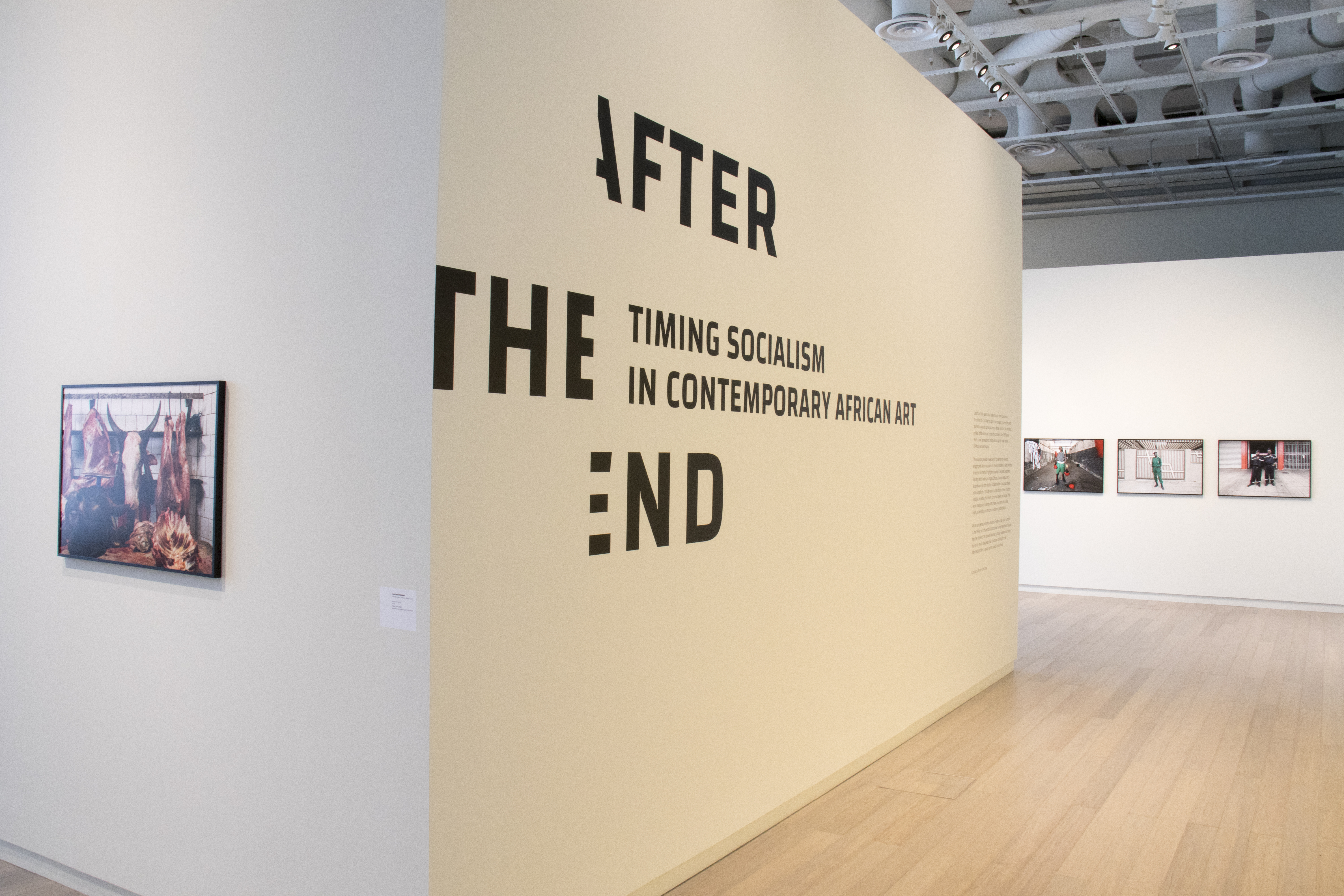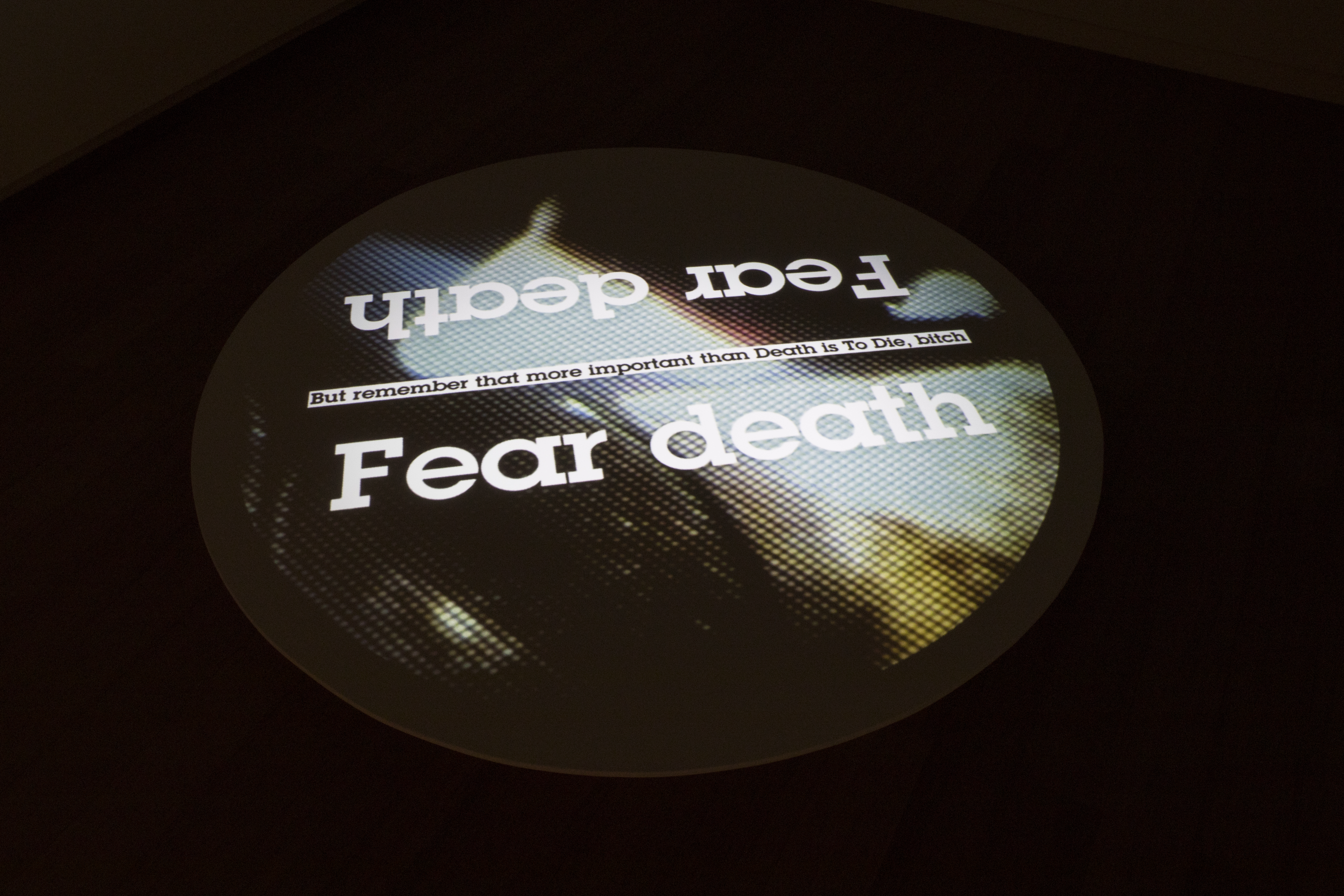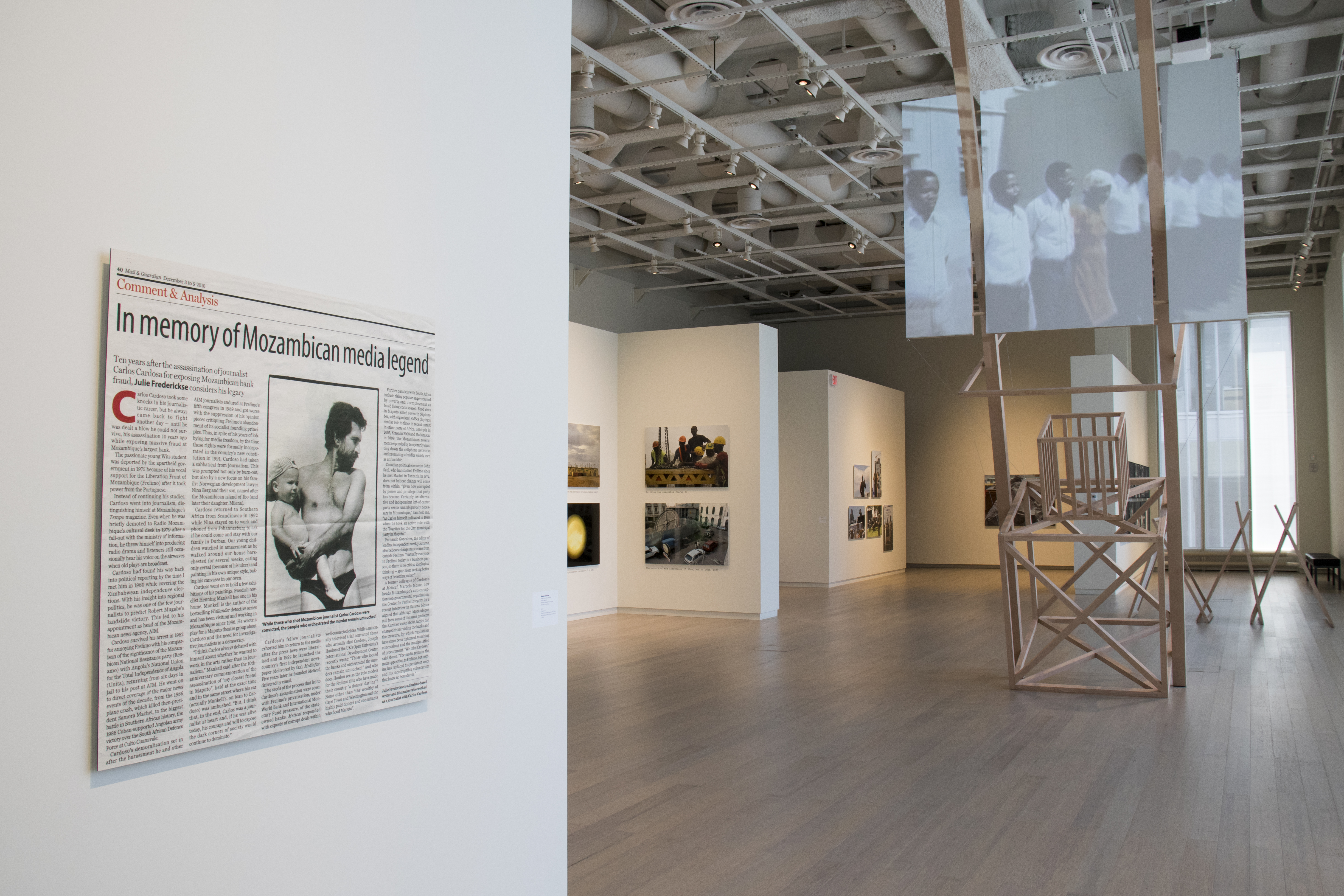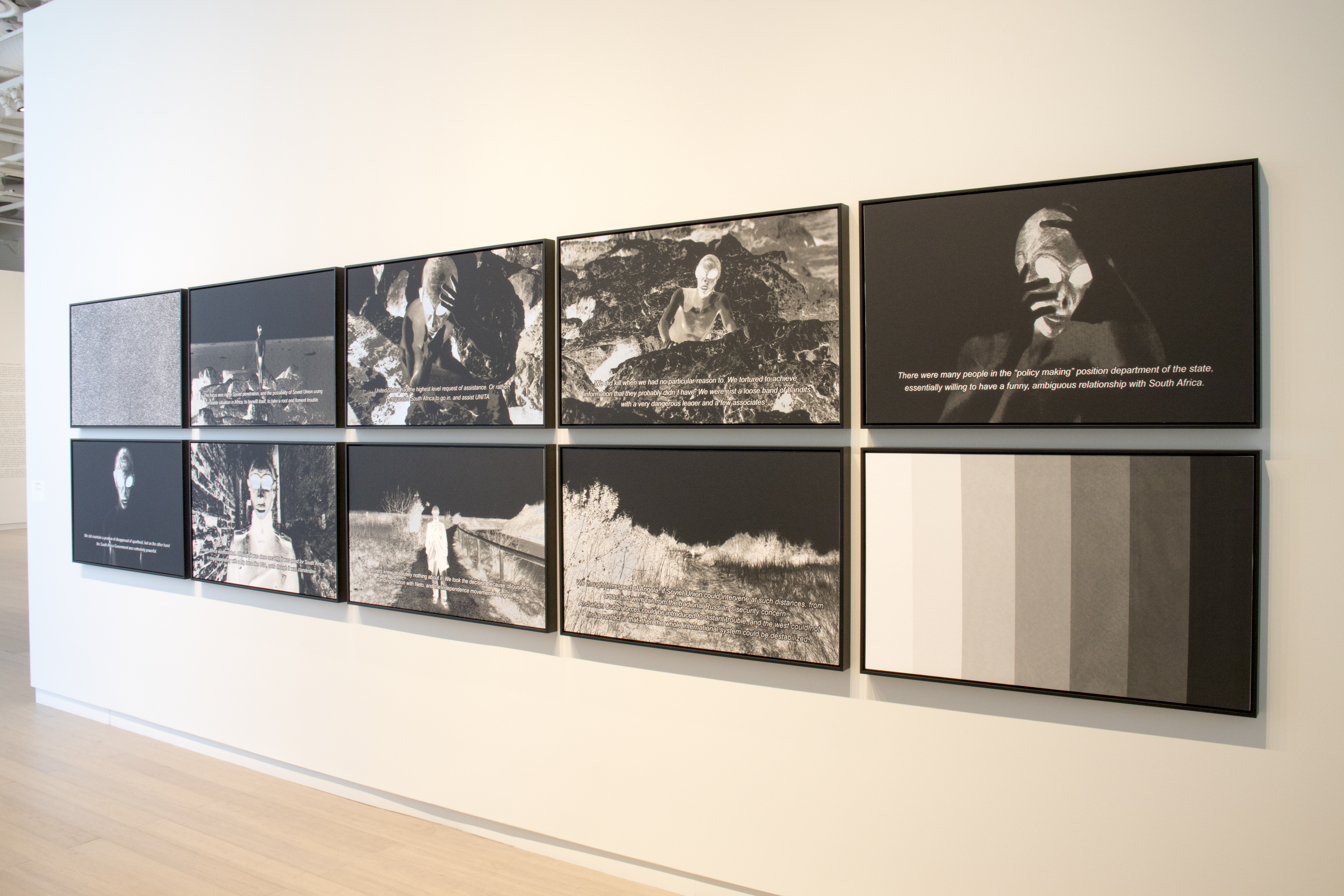After the End: Timing Socialism in Contemporary African Art at Wallach Art Gallery
After the End: Timing Socialism in Contemporary African Art, Wallach Art Gallery, Columbia University, New York City, June 15 – October 6, 2019
Philosopher and Columbia University faculty member Souleymane Bachir Diagne’s 2013 book The Ink of the Scholars: Reflections on Philosophy in Africa situates the afterlife of socialism in sub-Saharan Africa after the fall of the Soviet Union in 1989 in terms of “a search for itself.”(Souleymane Bachir Diagne, The Ink of the Scholars: Reflections on Philosophy in Africa. Dakar : CODESRIA, Council for the Development of Social Science Research in Africa, 2016.)
Taking Diagne’s framing as its premise, the exhibition After the End: Timing Socialism in Contemporary African Art presents African artists’ investigations of socialism through the lens of shifting temporalities—marking the first such presentation in North America. Curated by former Columbia University graduate student Álvaro Luís Lima (now Assistant Professor at the University of Florida), After the End consists of approximately two dozen artworks by ten artists in a pared-down installation that foregrounds the artworks’ formal qualities.

Installation view. After the End: Timing Socialism in Contemporary African Art. Columbia University Miriam and Ira D. Wallach Art Gallery / Eddie José Bartolomei.
Upon entering the gallery, located on the fourth floor of the Lenfest Center for the Arts, the viewer is confronted with a long wall printed with a brief introductory text. Here, the curator characterizes the history of sub-Saharan Africa after 1989 as a period of “social upheaval” coming just thirty years after independence, explicitly referencing Diagne in his proposition that the exhibition functions as “a space for this search to continue.” Entrances to the gallery frame either side of the wall, rendering the path forward unclear, and the open-endedness of the viewer’s route through the exhibition is reinforced by a total absence of didactic information on the walls. Luís Lima asserts in the introductory notes of the publication available at the show’s entrance that the installation is intended to foster an experience, rather than tell a particular story for someone else to read. The principle of open-endedness applies to the publication as well, with as many as four introductory and theoretical framing notes, and two or three possible interpretations for nearly each object. The vagueness of the introductory wall text and the privileging of aesthetic experience in the installation stands in contrast to the rigorous historical specificity and plethora of critical frameworks present in the accompanying publication. This bifurcation between aestheticism and historicism generates two possible experiences of the exhibition.

Kiluanji Kia Henda. Icarus 13: The First Journey to the Sun. The Spaceship Icarus 13, Luanda, 2007. Courtesy the artist and Goodman Gallery.
The artworks on view belong to a variety of media, including video, sculpture, painting and interdisciplinary works, yet nearly all engage with some aspect of photography’s penchant for both artifice and evidence. Kiluanji Kia Henda’s Icarus 13: First Journey to the Sun (2007) engages with the exhibition’s themes of heterochronicity and socialist legacies in a particularly playful and poignant way. The work consists of ten large-scale photographic prints of abandoned architectural structures in contemporary Angola accompanied by a wall-size text detailing the space mission referenced in the title whose aim is to measure the temperature of the sun. The tension between the fictionalized account of Icarus 13 and the images of the failed infrastructure planning projects of the socialist state points to the fallacy of the photograph as evidence by conjuring an alternative future that may yet come to be. An autodidact, Kia Henda (b. 1979) lives in Luanda, Angola and Lisbon, Portugal. He was first inspired by the work of South African photojournalist David Goldblatt, whose photographic projects explore the colonial past, deploying irony and humor to challenge accepted narratives of history and identity.

Nástio Mosquito. Nástia’s Manifesto, 2008. Video still courtesy the artist, © Nástio Mosquito.
Nástio Mosquito’s Manifesto (2008) picks up another thread that binds many of the show’s works, namely the artists’ engagements with the European avant-garde movements of the first half of the twentieth century. Also from Angola, Mosquito (b. 1981) explores issues of cultural patrimony, drawing on his training as a camera operator and filmmaker. This single-channel video projected onto a circular screen placed just a few inches off the floor, Manifesto offers seventeen points of advice on how to be “ironic, hypocritical and not give a f—.” The work appropriates the slogans and jargon of contemporary corporate and wellness cultures, shifting between absurdity (“allow events / people to f— you up”) and sagacity (“be inspired by what transcends your existence”), ultimately affecting a provocative parody reminiscent of Dada. The brightly colored words juxtaposed with distorted photographs and patterns swirl on the floor, prompting the viewer to walk around the circular disk, but ultimately frustrating one’s attempt to read the texts without contorting one’s neck. Manifesto’s connection to the efflorescence and negotiation of socialism in sub-Saharan Africa is ostensibly rooted in the artist’s biography, rather than the content or form of the work itself.

Installation view, After the End: Timing Socialism in Contemporary Art. Columbia University Miriam and Ira D. Wallach Art Gallery / Eddie José Bartolomei. Artwork shown: Ângela Ferreira. In Memory of Mozambique Media Legend, 2011; and For Mozambique (Model No. 1 of Screen-Tribute-Kiosk Celebrating a Post-Independence Utopia), 2008.
The logistical frustration in viewing Mosquito’s Manifesto also affects one’s experience of Ángela Ferreira’s For Mozambique (Model No. 1 of Screen-Tribute-Kiosk Celebrating a Post-Independence Utopia), also from 2008. Alternating between the music video for Bob Dylan’s song “Mozambique” released in 1976 and French filmmaker Jean Rouch’s footage of the country from the same decade, For Mozambique combines digital media and sculpture. Evoking Vladimir Tatlin’s Monument to the Third International (1920), the video is projected onto a screen placed high atop a wooden structure. However, the sharp downward angle of the screen and the overwhelmingly high volume of the soundtrack make it difficult to discern the images and to focus on the artist’s two other works nearby—mediaFax2 and In Memory of a Mozambique Media Legend (both 2011), which similarly explore issues of representation and technology. Consisting of three large colored shapes, mediaFax2 represents a sculptural abstraction of a Mozambiquan guerilla news service of the early 1990s that used fax machines to counter official censors. In Memory of a Mozambique Legend similarly plays with scale, consisting of an enlarged reprint of a news article commemorating the assassinated journalist Carlos Cardozo.

Kiluanji Kia Henda. The Bad Guys and the Good Guys, 2010-2016. Columbia University Miriam and Ira D. Wallach Art Gallery / Eddie José Bartolomei.
Although After the End centers on contemporary artists’ engagements with socialism in sub-Saharan Africa, none of the artists selected for the exhibition address the particularities of the three nations most closely associated with the development of a continental school of socialist philosophical thought, namely Ghana, Senegal, and Tanzania. Instead, Luís Lima selected artists born in Angola (Kia Henda, Mosquito, and Yonamine), Ethiopia (Mehretu, Kebedech Tekleab, Mezgebu Tesema), Guinea-Bissau (Filipa César), and Mozambique (Filipe Branquinho, João Costa and Ferreira). With the exception of Ethiopia, the preponderance of artists from former Portugese colonies indubitably reflects the curator’s own expertise in African Lusophone cultures. However, including artists from other countries of the continent and/or those who engage with the legacies of Kwame Nkrumah, Léopold Sédar Senghor, and Julius Nyerere would have further augmented the rich formal and intellectual connections among the objects presented in the exhibition. A notable exception is Kia Henda’s work The Bad Guys and the Good Guys (2010-2016), focusing on the United States Central Intelligence Agency, and Cuban and South African governments’ interventions in the Angolan Civil War, which lasted intermittently from 1975 to 2002. The Good Guys and the Bad Guys consists of ten black-and-white screen prints depicting a human figure wearing a mask reminiscent of Tchokwe masks collected by Europeans at the turn of the twentieth century juxtaposed with text detailing these incursions from the documentary Cold War Stories, produced in 1997 by CNN’s founder Ted Turner.
The fact that the specific cultural context and historical references for these artworks are available only in the exhibition booklet seemingly limits the viewer’s engagement with the full meaning of each: the context of a particular object cannot be immediately apprehended based on its formal qualities or content alone. This curatorial choice seems slightly contradictory given that the organizing principle for the show is artistic responses to a given set of historical, social, and material conditions. In one of the final mini-essays in the publication entitled, “Against Historicism,” the curator explicitly states that After the End seeks to “engage with the gaps and limits in the many discourses of socialism in Africa.” While Luís Lima’s adamant rejection of teleological approaches to art history is admirable—and perhaps even necessary in our own historical moment—the lack of didactic information on the gallery walls nevertheless begs the question: Who is the intended or imagined audience for After the End?
Indeed, Luis Lima’s robust research and thoughtful, clearly written engagements with a number of complex critical theories—from Francis Fukuyama’s idea of surpassing history to Hans Belting’s reflections on the future of art history—provided in the accompanying publication should not be missed. In eighteen oversized pages with color illustrations, the publication of the same title traces connections between nearly all of the artworks included in the exhibition, insightfully combining socio-historical context with visual analysis. Luís Lima situates After the End as a direct response to the exhibitions African Art and the Shape of Time (University of Michigan Museum of Art, Ann Arbor, 2012-2013) and Things Fall Apart (Calvert 22 Gallery, London, 2016), asserting that the exhibition unites the themes of these two landmark shows, namely the asynchronicity of the work of art and the legacy of socialism in Africa. Ultimately, however, by relegating the contextual information for each artwork to the exhibition pamphlet, After the End’s primary contribution consists in presenting the work of a number of artists from Lusophone sub-Saharan Africa, some with international reputations and others previously unknown to the United States public, in an open-ended way. Nevertheless, After the End offers an important point of departure for addressing the still understudied impact of socialism and the Cold War on artists in sub-Saharan Africa in the field of art history.





